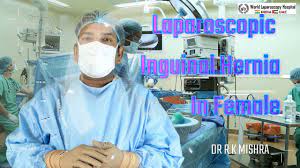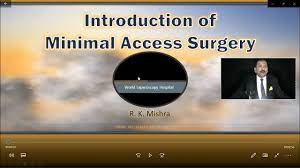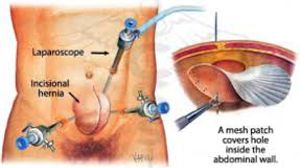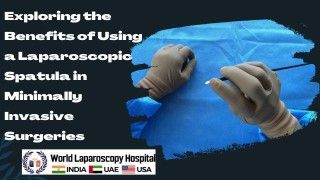Pioneering Laparoscopic Oophorectomy in a 3-Year-Old Child
Add to
Share
1,256 views
Report
2 years ago
Description
In the realm of pediatric surgery, a groundbreaking milestone has been achieved through the pioneering procedure of Laparoscopic Oophorectomy in a 3-year-old child. This remarkable achievement represents a significant advancement in pediatric surgical care, demonstrating the transformative power of minimally invasive techniques in delicate procedures involving young patients. Laparoscopic Oophorectomy, the removal of an ovary through minimally invasive surgical means, has traditionally been performed through open surgery in pediatric patients. However, with advancements in laparoscopic technology and surgical expertise, the boundaries of what is possible in pediatric surgery have been expanded. This pioneering procedure marks a crucial step forward in improving patient outcomes, reducing surgical trauma, and enhancing recovery for young children requiring oophorectomy. Performing Laparoscopic Oophorectomy in a 3-year-old child presents unique challenges, as the surgical team must navigate delicate anatomy and ensure utmost precision while preserving the surrounding structures. The procedure requires a highly skilled and experienced surgical team proficient in both laparoscopic techniques and the specific nuances of pediatric surgery. Witness the expertise and dedication of the surgical team as they navigate these challenges with exceptional care and precision. One of the primary benefits of laparoscopic surgery in pediatric patients is the minimally invasive approach, which minimizes surgical trauma and offers several advantages over traditional open surgery. The use of small incisions, specialized instruments, and a laparoscope allows for a magnified view of the surgical site. Witness how these tools and techniques enable the surgical team to access and remove the affected ovary with minimal disruption to surrounding tissues, reducing the risk of complications and expediting the healing process. The minimally invasive nature of Laparoscopic Oophorectomy in a 3-year-old child yields numerous benefits, including reduced postoperative pain, shorter hospital stays, and quicker recovery times. Young patients experience less discomfort, enabling them to resume normal activities and return to their daily routines more swiftly. Witness the transformative impact of this procedure as it enhances the overall surgical experience for both the child and their caregivers. Moreover, Laparoscopic Oophorectomy in pediatric patients introduces a significant psychological advantage. The smaller incisions and reduced scarring contribute to improved body image and self-esteem for children, promoting a positive emotional well-being during the recovery process. Witness the holistic approach to pediatric surgical care as the surgical team recognizes and addresses the unique needs of young patients. This pioneering procedure serves as a catalyst for advancing pediatric surgical care, setting a precedent for future applications of minimally invasive techniques in intricate surgeries involving young patients. Witness the collaborative efforts of the surgical team, incorporating the latest technological advancements, refined surgical skills, and a patient-centered approach. The procedure represents the culmination of years of research, experience, and dedication to improving the quality of care for pediatric patients. In conclusion, the pioneering Laparoscopic Oophorectomy in a 3-year-old child embodies the transformative potential of minimally invasive techniques in pediatric surgical care. Through this remarkable achievement, the surgical team showcases their expertise, compassion, and commitment to advancing the field of pediatric surgery. Witness the profound impact of this procedure as it improves patient outcomes, enhances recovery experiences, and paves the way for future innovations in pediatric surgical care. In the realm of pediatric surgery, a groundbreaking milestone has been achieved through the pioneering procedure of Laparoscopic Oophorectomy in a 3-year-old child. This extraordinary achievement represents a significant advancement in pediatric surgical care, as it demonstrates the transformative power of minimally invasive techniques in delicate procedures involving young patients. Laparoscopic Oophorectomy, the removal of an ovary using minimally invasive surgical methods, has traditionally been performed through open surgery in pediatric patients. However, with advancements in laparoscopic technology and surgical expertise, the boundaries of what is possible in pediatric surgery have been expanded. This pioneering procedure marks a crucial step forward in improving patient outcomes, reducing surgical trauma, and enhancing recovery for young children requiring oophorectomy. Performing Laparoscopic Oophorectomy in a 3-year-old child presents unique challenges, as the surgical team must navigate delicate anatomy and ensure utmost precision while preserving the surrounding structures. The procedure requires a highly skilled and experienced surgical team proficient in both laparoscopic techniques and the specific nuances of pediatric surgery. Witness the expertise and dedication of the surgical team as they navigate these challenges with exceptional care and precision. One of the primary benefits of laparoscopic surgery in pediatric patients is the minimally invasive approach, which minimizes surgical trauma and offers several advantages over traditional open surgery. The use of small incisions, specialized instruments, and a laparoscope allows for a magnified view of the surgical site. Witness how these tools and techniques enable the surgical team to access and remove the affected ovary with minimal disruption to surrounding tissues, reducing the risk of complications and expediting the healing process. The minimally invasive nature of Laparoscopic Oophorectomy in a 3-year-old child yields numerous benefits, including reduced postoperative pain, shorter hospital stays, and quicker recovery times. Young patients experience less discomfort, enabling them to resume normal activities and return to their daily routines more swiftly. Witness the transformative impact of this procedure as it enhances the overall surgical experience for both the child and their caregivers. Moreover, Laparoscopic Oophorectomy in pediatric patients introduces a significant psychological advantage. The smaller incisions and reduced scarring contribute to improved body image and self-esteem for children, promoting a positive emotional well-being during the recovery process. Witness the holistic approach to pediatric surgical care as the surgical team recognizes and addresses the unique needs of young patients. This pioneering procedure serves as a catalyst for advancing pediatric surgical care, setting a precedent for future applications of minimally invasive techniques in intricate surgeries involving young patients. Witness the collaborative efforts of the surgical team, incorporating the latest technological advancements, refined surgical skills, and a patient-centered approach. The procedure represents the culmination of years of research, experience, and dedication to improving the quality of care for pediatric patients. In conclusion, the pioneering Laparoscopic Oophorectomy in a 3-year-old child embodies the transformative potential of minimally invasive techniques in pediatric surgical care. Through this remarkable achievement, the surgical team showcases their expertise, compassion, and commitment to advancing the field of pediatric surgery. Witness the profound impact of this procedure as it improves patient outcomes, enhances recovery experiences, and paves the way for future innovations in pediatric surgical care.
Similar Videos






